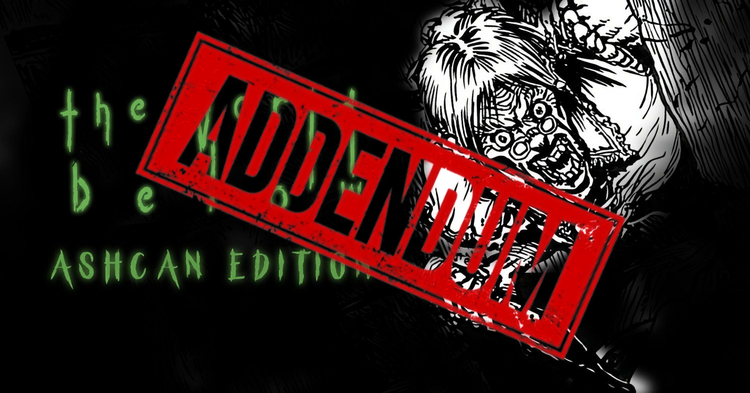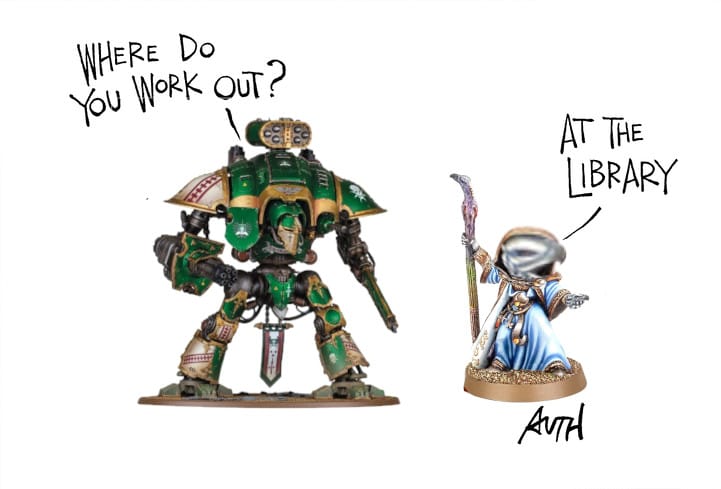Silly Spelunking Shenanigans - A Review of The World Below: Ashcan Edition
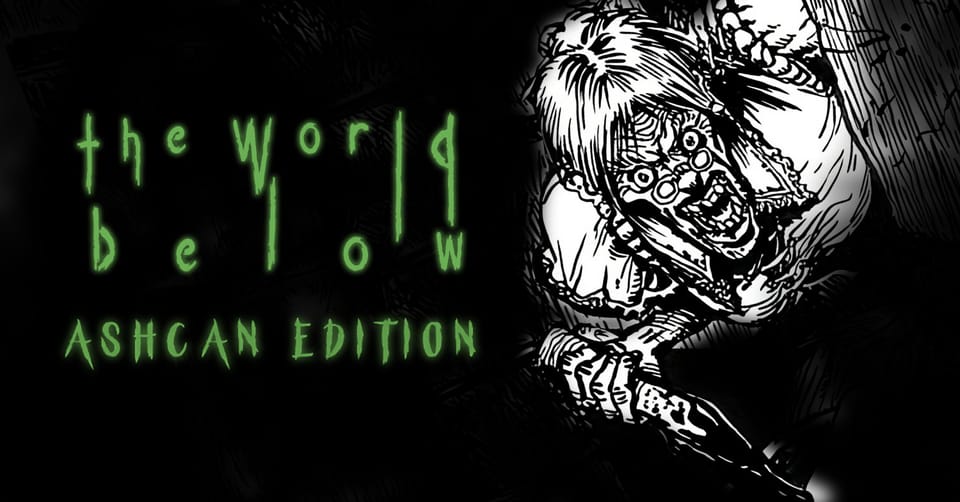
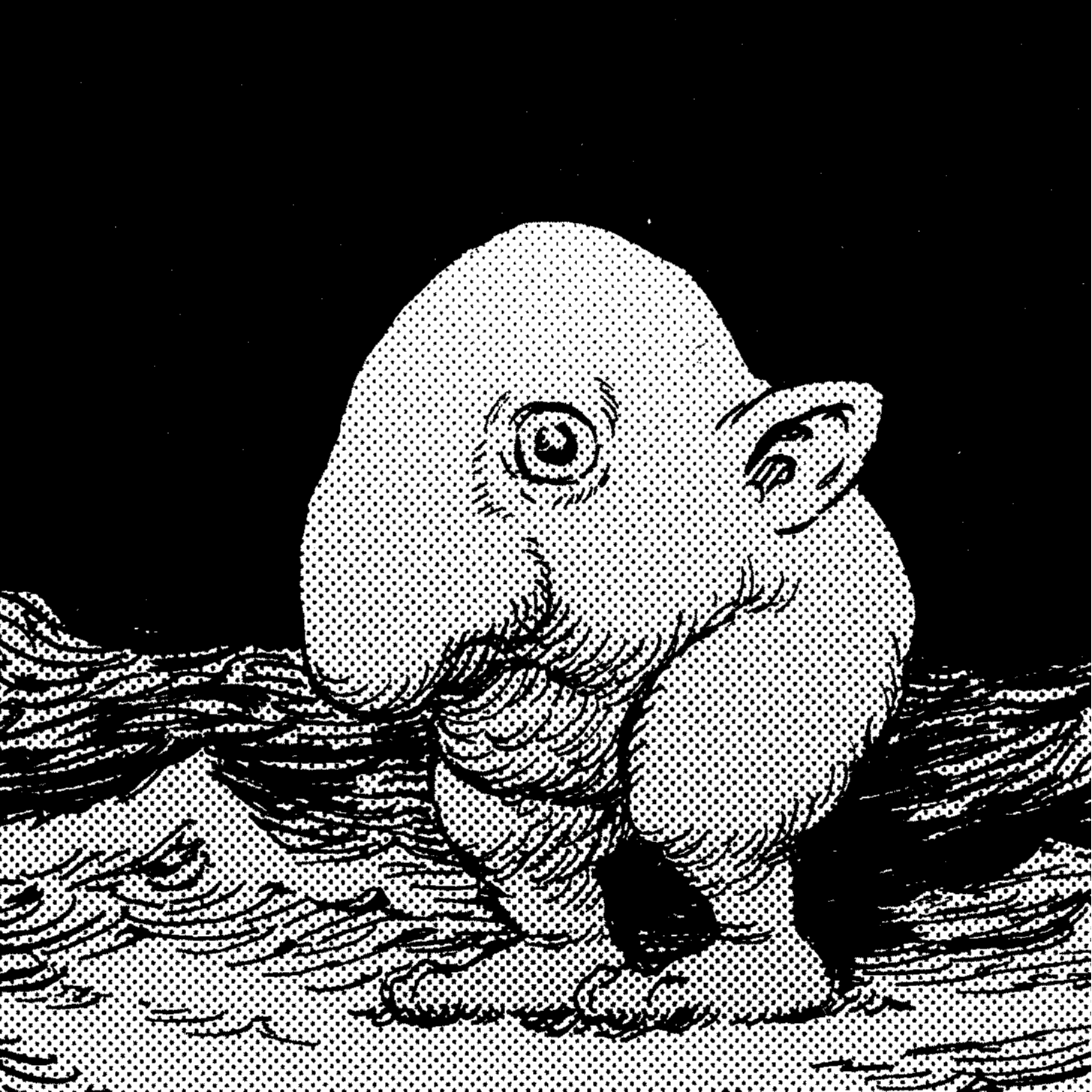
This was initially supposed to be a video, but unfortunately, "how to properly create TTRPG content for YouTube" is still not a solved issue for me. Sure, the actual writing part, that came easy. Attaching visuals, not so much. I couldn't help but wonder if viewers would get annoyed at the amount of slow pans over static images I had, and not to mention that the constant asset procurement really slowed the workflow. In the interest of working on videos that I had a much stronger vision for (and to not let the thousands of words and hours of research go to waste), I figured it was still worth sharing my thoughts on this blog that I...barely use.
It might look like some twenty-page indie OSR darling you'd find for a dollar on Itch.io, but there's actually a lot to say about The World Below: Ashcan Edition. To me, it's very emblematic of what I love and what I'm iffy on when it comes to Onyx Path products. Is it worth taking a look at for the average tabletop gamer, and should you look forward to the full release? Let's find out, shall we?
The Preamble
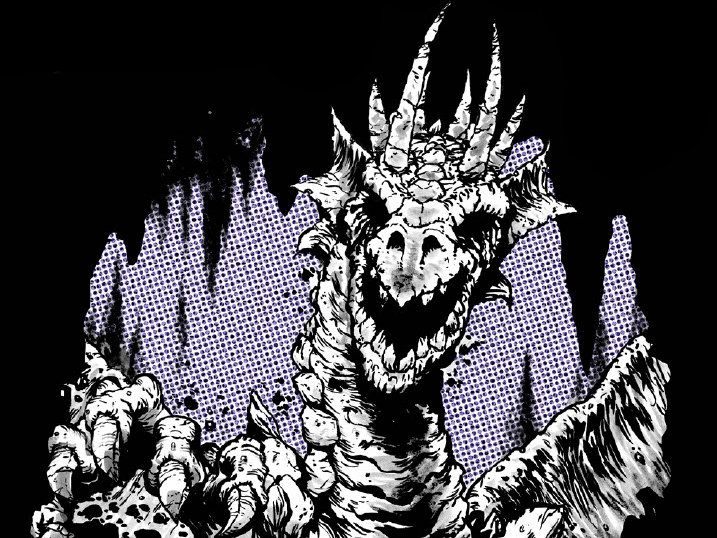
Perhaps the most notable thing about The World Below right off the bat is that this might be the first classically-styled fantasy RPG using a Storyteller-based system. I'm not just talking about being in a historical past like the World of Darkness Dark Ages books, but a proper dungeon-crawling, loot-gathering, monster-smashing escapade complete with your usual classes, races, and monstrous bestiaries. It helps that Ed Greenwood, creator of world famous kitchen sink The Forgotten Realms, got brought on to compose some of the lore (Mostly the various monsters). Of course he's not the guy running the show; nine authors are listed as having contributed to the document, and from the sounds of it they all had some input on the setting and mechanics [1].
That being said, there is a reason why The World Below is the first of its kind. The system it uses focuses ostensibly on narrative and cinematic action taking place within our own "reality": humans in cities on regular ass Earth except with a Weird Thing™ hiding in the shadows. Very rarely do problems get solved through delving into glorified mazes and cracking open treasure chests. They're two very different methods of designing adventures and scenes, and Storyteller-based systems are designed to lean away from the obvious trappings of your average fantasy romp.
Speaking of design, one of the elements I associate really strongly with fantasy is risk. In this genre, it's less about the players' personal stories and more about the trials and tribulations they face on journeys into the unknown. Though it's definitely more of an OSR thing, even the tentpole fantasy TTRPGs, your Dungeon & Dragonses and your Pathfinders, at least try to make players aware that one wrong move could lead to their death.
That's not something I associate with Storyteller or Storypath. If anything, they seem to be written with a PC-first mentality, especially the newer Storypath. In lesser examples there's how Scale works in Scion, which when applied against a player, gets an enemy's Successes significantly downgraded. An attack that gives five times the amount of Successes will suddenly only add on four Successes when a PC is involved. In larger examples there's the entirety of They Came From...!, with Trademarks and Rewrites that give considerable power to the players and let them control the adventure.
That's not a knock against those two lines, but you can see how that might conflict with classic fantasy and why I was initially a little worried going into The World Below. Onyx Path very rarely misses with their background lore, but would they cobble together a decent ruleset that matches the genre they seem to be invoking?
A Note About The Ashcan
Just to clarify before we get any further: The World Below isn't actually released yet. What we're looking at is the Ashcan Edition, and to simplify a handful of paragraphs describing the significance behind the name, it's basically just a quickstart. You get enough rules and lore to get through a short scenario—in total the whole package is about 50 pages worth of content.
Not too bad, I know quickstarts that are shorter and have less to offer.
Lore
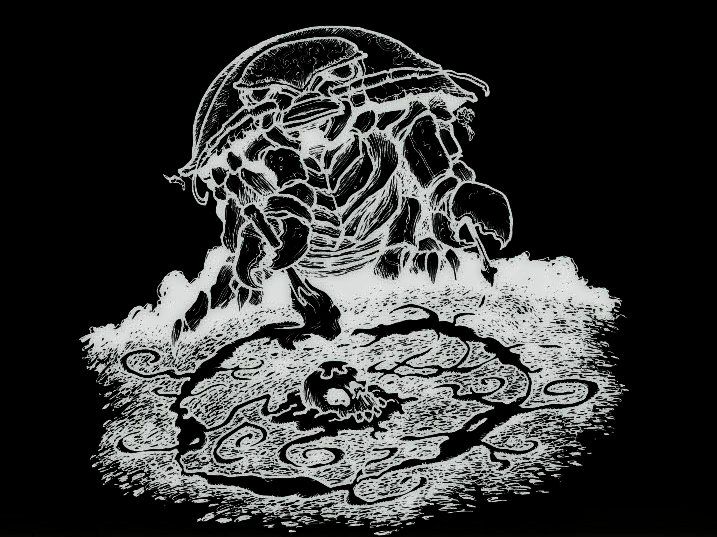
The World Below takes place a couple generations or so after a huge magical calamity. So terrible was this disaster that all sapient beings decided it was much better living in holes. Good start already, I love "rebuilding after an apocalypse" settings. However, the downside of reading settings I like is that I'm more particular about its lore, so I'm pleased to report that I actually enjoyed picking through what we got so far.
The high level overview is that there's a core of more populated settlements—whether its the scrum-compressed Mud Town or the tradespeople heavy Telver's Hearth. The further you head off from these communities, the deeper into the unexplored you go. Perhaps you might come across a passage once-collapsed, a bounty of treasures hiding just ahead. Perhaps you might run into a roving gang of bloodsucking spiderpeople, whose essence corrupts the very caverns they tread across.
With how transient life is in the World Below, boons and banes can spell the difference between seeing another day or breathing your last.
Magic, as you might expect in a world where a Magical Calamity happened, is potent and unpredictable. If you somehow missed that when reading through the ashcan, then the fact that magic is called Kaos with a K should also tip you off.
Not only is Kaos something people can easily channel, it seems it has a mind of its own, seeping into the denizens of the World Below in odd ways. Some are born with an inbuilt attunement to certain aspects of life underground—the fungi that persist despite the inhospitable conditions, or the very personification of the unknown. Of course, Kaos also manifests in rocks, in streams, in ancient sarcophagi thought to contain sleeping gods. It's just as liable to help as it is to harm.
To me, these elements really get my GMing (Or, uh, "Storyguiding"?) urges tingling. Well, there's two elements specifically.
I like that there's both established locations as well as blank patches that the GM and players can explore. If the profile for Telver's Hearth and Glowstream is anything to go by, there'll be enough details in the supplied towns to base entire adventures around, but if you want to create your own settlements, then there's enough inspiration and guidelines to get your noggin joggin'.
More than that, there's a spontaneity built in that's allowed, and even expected. Anything can and will happen, good or bad, and interesting adventures (and twists within those adventures) are easy to come up with. Though I don't think that the included scenario really takes advantage of this as much as I would, I'll admit this is more of my own personal tastes being appealed to here.
I can imagine a really good sandbox campaign about managing a settlement within the setting. Have a few sessions dealing with politicking, managing trade and resources, a couple of social crises, then have the next few about venturing out and fighting some existential threat. You could arguably do that with any fantasy TTRPG, but there's a whole lot more support for it in The World Below thanks to really solid worldbuilding and lore[2].
The way PCs are presented is also worth pointing out. There's a pretty strong refrain in much of the lore that ties into power—more specifically, the delicate balance one needs to grow and maintain it. You need power to survive, to fight back the horrors that scavenge for anything to feast upon. What happens, though, when you have the power you need? When the roles are reversed and it's you who can dominate those who are weaker?
Your PCs are those that are equally respected and feared. Any other game would describe the classes with a heroic gravitas, but here they're almost otherworldly in their abilities. They risk life and limb to steal away the dark's secrets—the only thing the average denizen can do is trust that they'll act altruistically.
Yeah this is pretty fucking dope. It's a setting fraught with peril, where every course of action is uncertain and unpredictable. More power means more difficulties, not less, which is what I like. It honestly surprised me that. there's not really one thing that bothers me about what I read in the ashcan. I'm the kind of person that always finds one thing to complain about, but the lore's solid all the way through. A+.
A Conspiracy Theory
Okay that's a lie. There is one weird thing I need to mention before moving on. Not weird good, not weird bad, just...weird.
The World Below is the first in a larger gameline called The Earthbane Cycle. To be honest, the name is...lame. I'm not going to lie. When I read it, I imagined a random yellowed fantasy paperback that calls itself "THE SEVENTH INSTALMENT OF THE EARTHBANE CYCLE", and it looks really generic, with a cover that's an attempt at a Frank Frazetta piece but with no soul. It's such a minor thing to complain about, but either way, it's not going to stop me from disliking it.
I bring this up not to make awful jokes, but because of a very strange post on the Onyx Path official blog. It's a Q&A, and the first question asks if The World Below takes place in our Earth, to which the first part of the reply is "Not in a majorily identifiable way." This strangeness continues, as when asked if it's related to the canine-based fantasy TTRPG Pugmire, the answer is a straight fuck no.
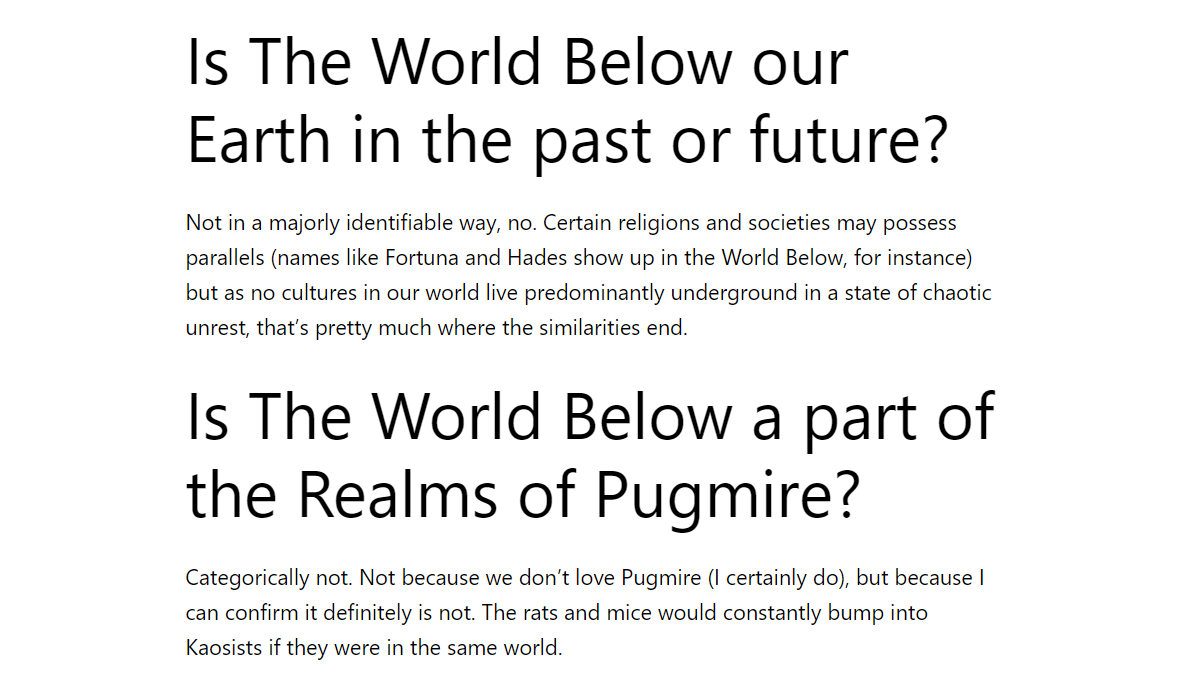
I want you to read through the whole answer and tell me: Am I crazy? The word choice is very eyebrow-raising, isn't it? It would be really easy to say "this is an original fantasy setting with elements of our own world to help players empathize with their characters and the wider society", right? So the fact they didn't say that, and the fact they didn't give a complete denial like they did with Pugmire...
And what about the name: The Earthbane Cycle. EARTHbane Cycle.
Yeah, Earth could just be referring to the ground, but they could've called it anything else. The Worldbane Cycle, the Lifebane Cycle, yet they deliberately chose Earth. Why, I ask?
It's strenuous, but it makes you wonder if this does take place in an alternate version of our Earth. Keep in mind, the current Storypath games all take place in alternate Earths, so we already have a clear trend. Maybe the magical calamity wasn't magical at all, but a fucking atomic bomb on steroids. Kaos isn't magic, but some kind of super radiation that does weird shit to the environment.
This is just speculation, but I can easily picture this hidden twist being in the full version somewhere. You'd have passage about some delvers discovering some ancient place of worship, a statue of a god—a pale man in red and yellow—an alter, and behind it are strange shapes and words—the commandments of their religion—and adorning the walls is a strange symbol...
A golden M.

Please don't do that, I know I made it sound super cool and super mysterious, but it's not, it's fucking stupid. I didn't like it in Adventure Time and I'm probably not going to like it if it's in The World Below, especially if that twist leads to stupid shit like in the last couple paragraphs.
A Very Short Look At The Art
I like it. It's got that classic fantasy look, black and white, very stylized. Maybe a little kitschy, but it's charming. Though, the only image I'm not super keen on is this evil Sesame Street muppet?
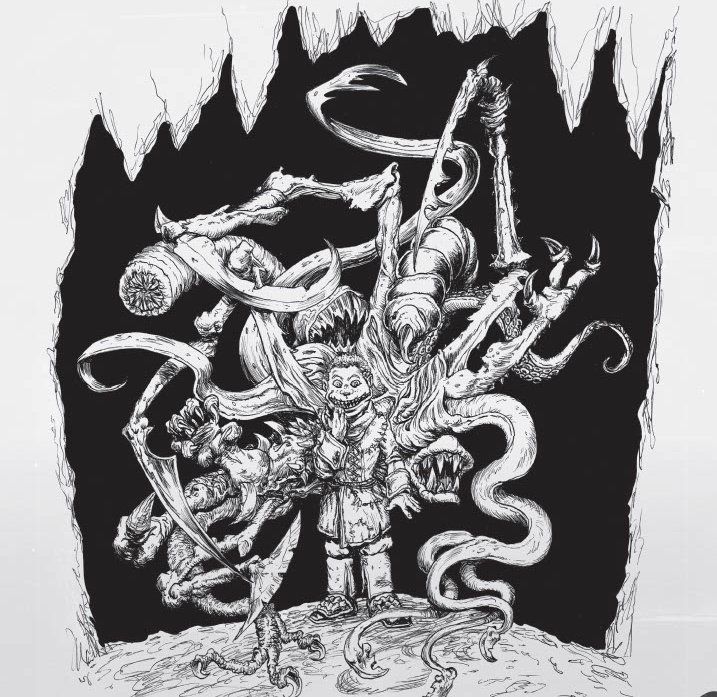
I do hope they keep to this style though, it fits well with the lore[3].
General Rules
The World Below runs off the new Storypath Ultra system. It's a descendent of the Storyteller system, which famously powered Vampire: The Masquerade and it's various of Darkness spin-offs. Onyx Path did their own spin on it with the Storypath system, which powers They Came From...!, Scion, and Trinity Continuum.
Storypath Ultra is the new iteration of Storypath that aims to be a minor update—not a wholly new edition but some refinements to smooth out the experience. For convenience sake, I'll be referring to the earlier Storypath system as Storypath Classic.
If you're unfamiliar with Storypath, skill checks are similar to the flavor of Storyteller found in Chronicles of Darkness. Assemble the dice pool based on the pips of an Attribute and Skill on your character sheet, 8s and higher on a d10 count as a Hit (Or Success in earlier rulesets). 10s count as double Hits rather than exploding into another roll.
This, obviously, gives you an average of more Hits. A 5d10 roll in Chronicles gives an average of 1.67 Successes while the new method in Storypath Ultra gives you an average of 2 Hits.
If you get a bonus in some way, those come in the form of Enhancements. As long as you roll one Hit, you automatically get the Enhancement—when activated, they act as another Hit. There's a lot of ways to get these, actually, through abilities, equipment and weapons, or some kind of circumstantial advantage. It's way more reliable than adding or subtracting from your dice pool, but much less tactile and something you have to remember to apply afterward.
Now since the odds of succeeding are higher, there are some changes made to offset it. In Chronicles of Darkness, a single Success was enough to succeed a skill roll. In The World Below, Storyguides are encouraged to adjust the number of Hits needed to succeed, either through adding onto the base difficulty or through a system called Complications. Complications are the "succeed at a cost" system, essentially providing some extra challenges should they not be bought off with Hits.
Say a PC is breaking into a house; beating the base difficulty means they get in without anyone discovering them. A Complication from that could be that they leave obvious evidence of a break-in, not necessarily a mission failure but enough to raise the stakes and could lead to further issues down the line.
This does take some getting used to, but as someone who's been in a few Storypath Classic sessions and went through The World Below: Ashcan Edition's scenario, I think it's worth it. I like it a lot more than a binary pass/fail, and it adds dimensions to the game world when it works. On the other hand, it's more work on the GM side, and depending on your experience and style, it might be hard to consistently bring Enhancements and Complications into play.
Although simplified, the core system is nicely designed, an obvious step up from Storypath Classic. However, unlike with the lore, there is something that is worth complaining about, and it's not just another conspiracy theory.
The Momentum Rant
Going back to comparing Chronicles to Storypath Ultra, another major addition is a metacurrency. Willpower was the closest to thing to a metacurrency in Chronicles, but Storypath really goes hard on this.
It has different names in other games, but in The World Below, it's called Momentum. Instead of a per-player resource, it's now shared between the whole party, the base number being the number of players at the table. Spend one point lets you add an Enhancement bonus, lets you specify an important story detail, or pester the GM for a clue. Spending two points is the most potent, and it converts a failure into a success.
If you've ever played Genesys, this must sound pretty familiar, and on paper, I think it sounds pretty good. Where we run into issues is with how you gain Momentum.
There are two ways of generating Momentum. One is through the aptly-named Momentum Generators. These replace the Anchors from Chronicles of Darkness, however rather than being a trait your character can invoke, they're written as a sort-of mini Aspiration[4] and intended to be a repeatable goal you can accomplish once every couple of sessions.
The issue arises with how the ones included in the ashcan are designed. One might be based on a game mechanic ("Incur a negative status effect"), the next might as well be an Aspiration itself ("Discover lost lore"), and the one after that might be both bizarrely specific and up to GM interpretation. Like "Craft and adorn an artifact bearing your family's heraldic scale pattern". Okay, what constitutes as an artifact here? Am I only limited to equipment with the Artifact tag on it? Are we going off of the archeological definition of what an artifact is? And how does one adorn a scale pattern? Is it something that has to be made as well? Can it only be done in a settlement?
There's a bunch more like that: "Play a trick on someone stuffy". "Design a new form of ranged weapon (ideally involving fire)". They sound okay on paper, but once you seriously think how you're supposed to generate Momentum with them, you start to realize problems. "Stuffy" has so many definitions; how broad or narrow is the Storyguide supposed to be when evaluating if an action meets the criteria? How do you invent a "new form" of ranged weapon anyway, both in the narrative and in the mechanics? Not a "new" weapon, but a "new form" of weapon. Is this seriously supposed to be repeatable?
I'm being pedantic to prove a point. If I'm playing in a group that's focused on roleplaying, this is going to cause some major misunderstandings. If I'm playing in a group that's focused on combat, there's no reason for anyone to choose the more flavorful options when "Incur a negative status effect" is right there. That happens nearly every session, what reason is there to not take it?
The second method is through a new mechanic called Tricks. These are different effects that you can invest extra Hits into after clearing your difficulty. One of these Tricks, called Bolster, allows you to add onto your Momentum pool.
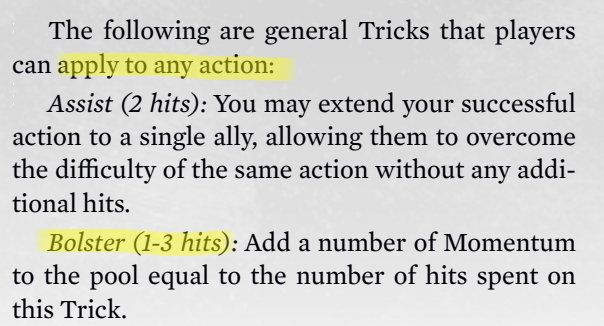
Compared to Momentum Generators, Bolstering is so comically easy that I'm shocked it's here. If you score 3 Hits on a 1 Difficulty roll, you can convert the excess into a Get Out Of Failure Free card. Even with the maximum limit of 3 Hits for the Trick, they still add up; in the game I was in, the party never fell below their starting Momentum pool, and any trial beyond the first few were done with almost little struggle.
With Bolster making it stupidly simple to accrue Momentum, it makes Momentum Generators effectively useless. Why go out of your way to RP your character's desires when you could fish for Perception checks or just do actions that gives you the most dice in a dice pool possible?
See, I'm one of the weirdos that likes TTRPG metacurrencies, but there has to be a give-and-take to make them work. In Genesys, you're giving your metacurrency to the GM whenever you use it, thus setting up the possibility of them spending it against you to make a crucial roll more difficult. In Chronicles of Darkness, the metacurrency is both a reward for good roleplaying, but also an incentive to push your character into situations that challenge their virtues and vices. In The World Below, you get the metacurrency either by fulfilling a weird requirement or rolling really well. It doesn't fit, doesn't feel right, and I'm tempted to say it's...wrong.
If I had to come up with some kind of solution to this, while it's not the most ideal, I'd personally bring back Consolations from Storypath Classic. If you're not familiar, Consolations is essentially rules-mandated fail forward, either the Storyguide gives you a hint to escape out of the PC's predicament, or you get a point in the metacurrency. There's still some kind of transaction, only it's not really in your control. It just kind of happens.
It does go against my personal philosophy that a failure should be a failure, but it's either this, the easily-abusable Bolster, or the sloppy Momentum Generators. I'd rather Consolations, but I also can't say I have the same amount of experience as the people who made The World Below, so I could be completely off about this.
Still don't like Momentum, though.
Characters
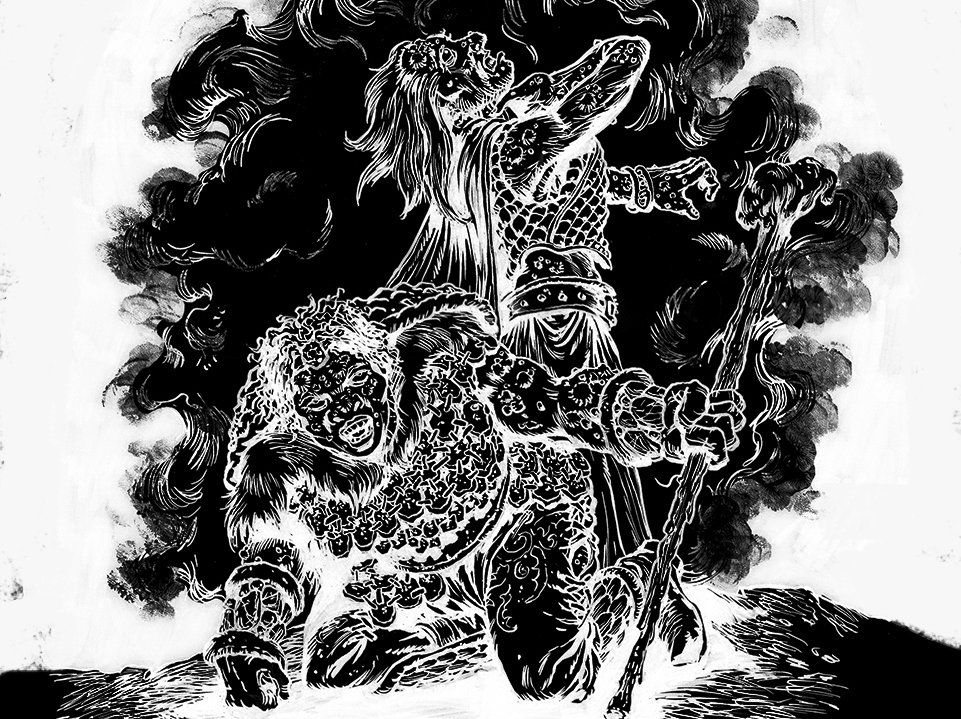
Rad, back to stuff I like.
So, in Chronicles, you had two major choices when making your PC. One could be generalized as your archetype, the other could be generalized as your allegiance. Usually each book had about 4 to 5 of each, but there were only so many combinations that it could be pretty limiting for long time players. It wasn't necessarily a problem in any of my games, but I can see how it might be something that the designers thought needed remedying.
When they changed over to Storypath, the two options became three Paths. One was your standard archetype, but the other two were more freeform—these being the Origin and the Ambition or Dark Agenda or Whatever Trinity's Doing I Haven't Read That Yet Path.
As someone used to the Chronicles system a lot, I didn't like that they added way more steps and made things more complicated for arguably little gain. For example, adding skills was something you used to do all in one go in Chronicles, in Storypath it's broken up between the three paths, then it gets path locked or whatever. It takes a lot longer to roll up a character for me and I think I'm passed the point where it's because of system unfamiliarity.
The World Below's iteration of characters, and what I could speculate of their character creation, adds much needed structure while still retaining that Storypath flavor. It still has the three Paths, but there's more of a clear direction on how to fill each out.
The Dawn path is made up of more discrete choices: your ancestry (Your Momentum Generator), your community (Starting skill spread), your dogma (Suggested Aspirations), and your guild (Starting attribute spread). Kind of feel like it should be the community that gives your attributes and your guild that gives you your skills? Either way, it's not freeform, and in my book, that's an improvement.
Your ancestries in the ashcan are human, rat, lizard, and goblin. They have more fantastical names, but uh, this is way more understandable. There are mentions of "elv" and "darv" elsewhere, so I'm guessing the classic pointy eared folk and stout bearded folk will be present somewhere in the full version. These don't give "racial abilities", but that doesn't mean it's been completely removed. More on that later.
Past the Dawn path, the other two paths are a lot more in line with Chronicles characters. Your Calling is your class, and of the however many are in the full release, we get four in the ashcan: The Hunter, your fighters and rangers; The Silhouette, your rouges and assassins; The Kaosist, your sorcerers and combat mages; and the Farsighter, your cleric and utility druid. There's also the Alchemist, which probably does alchemical things.
After that is your Dialectic. It's basically like your auspices from Werewolf complete with weird names, but Dialectics are more thematically linked to cavern life. Four of an unknown amount are in the ashcan; the Adamas are your jewel-themed, vaguely royal folk; the Myceli are the displaced cottagecore stoners; the Elementals, you know what they're all about by the name alone; and the Plutonic are the doomscrollers who stare too long at The Abyss. The literal Abyss. There are references to Qeobaca, who are vaguely more machine-inclined.
Through the three paths, there's your abilities and spells. Well, three different kinds. Theses, from your Dawn path, are essentially your Merits from Chronicles (And also include your "racial" abilities); Syntheses are your magic underground powers that your Dialectic path gives you; and your Sorceries are basically your Disciplines from Vampire: The Masquerade, and every class gets access to them, which is pretty neat.
If we're going by the premades, you get 7 dots for Theses, 5 dots for Syntheses, and 3 dots for Sorceries to start with.
I would go into detail on the individual abilities, but we only get enough to run the premades in the scenario, so it seems like a lot of them are still a work in progress. Nothing jumped out at me as being overly bad anyway, so no use really picking each one apart with a fine toothed comb. As a broad concept, however, the way abilities are set up is pretty good. Having three options instead of two opens up a lot of potential builds, moreso than in earlier Storypath games.
I will miss actual racial abilities. I can't speak for everyone, but when it comes to choosing races or ancestries (As they're more commonly known as in more modern games), part of the reason why one is chosen over the other has more to do with mechanics than aesthetics or lore. If all that is relegated to "build into it if you want it, potentially sacrifice other options", I'm not super keen on that. Pathfinder: Second Edition does this to some extent, yeah, but you at least get a free racial ability through heritages.
Before we move on, I'd like to shout out a particular Synthesis: Pet Rock. You get a magic rock that follows you around and you can throw it at people with a +1 Enhancement bonus. But that's not why I bring it up, it also reinforces my prior conspiracy theory. THE WORLD BELOW IS OUR WORLD! SHUT UP I'M NOT CRAZY, FOLLOW THE TRAIL, ASK THE QUESTIONS, THEY DON'T WANT YOU TO KN-
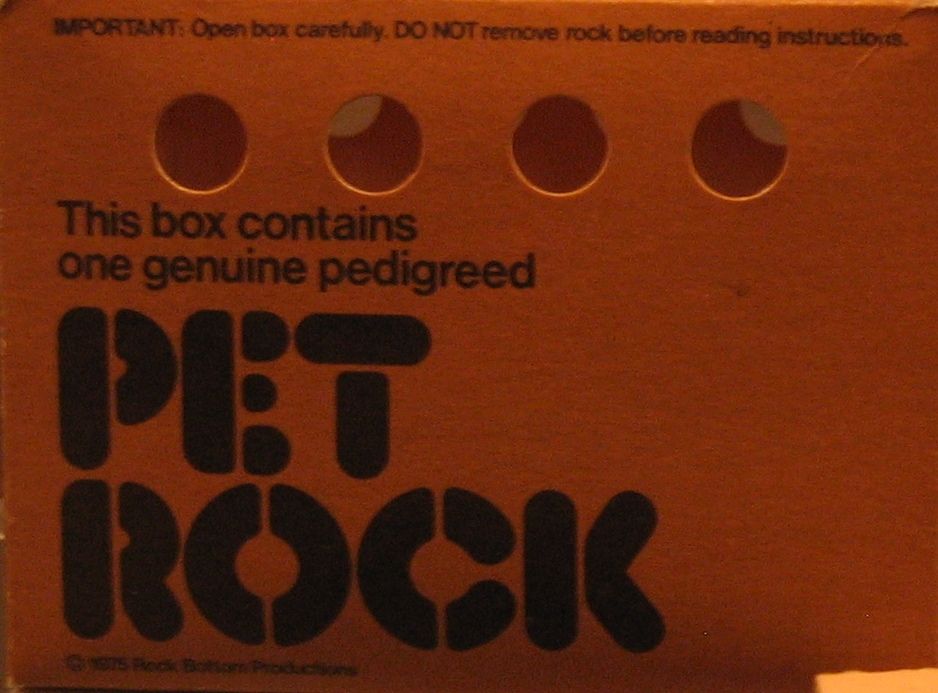
Oh yeah, there's equipment. In the ashcan, the premades get either an item with a +1 Enhancement or a weapon with two tags on it. I don't know why you'd choose the Enhancement when it feels like they're giving that shit out everywhere, and thankfully it was changed to a more appealing option. Now, PCs get to choose two of either a weapon, an armor, or an item. At the very least, now you don't have to sacrifice your combat ability to do one thing slightly better.
Overal, this is a big improvement from Storypath Classic, which always felt like it wanted to make big changes but was held back by needing to be similar to Chronicles Storyteller. Many of the weird bits were sanded or refined into more appealing mechanics. Even compared to other Storypath Ultra games—well, the one Storypath Ultra game I have access too—The World Below has a really appealing take on characters, abilities, and merits.
Combat
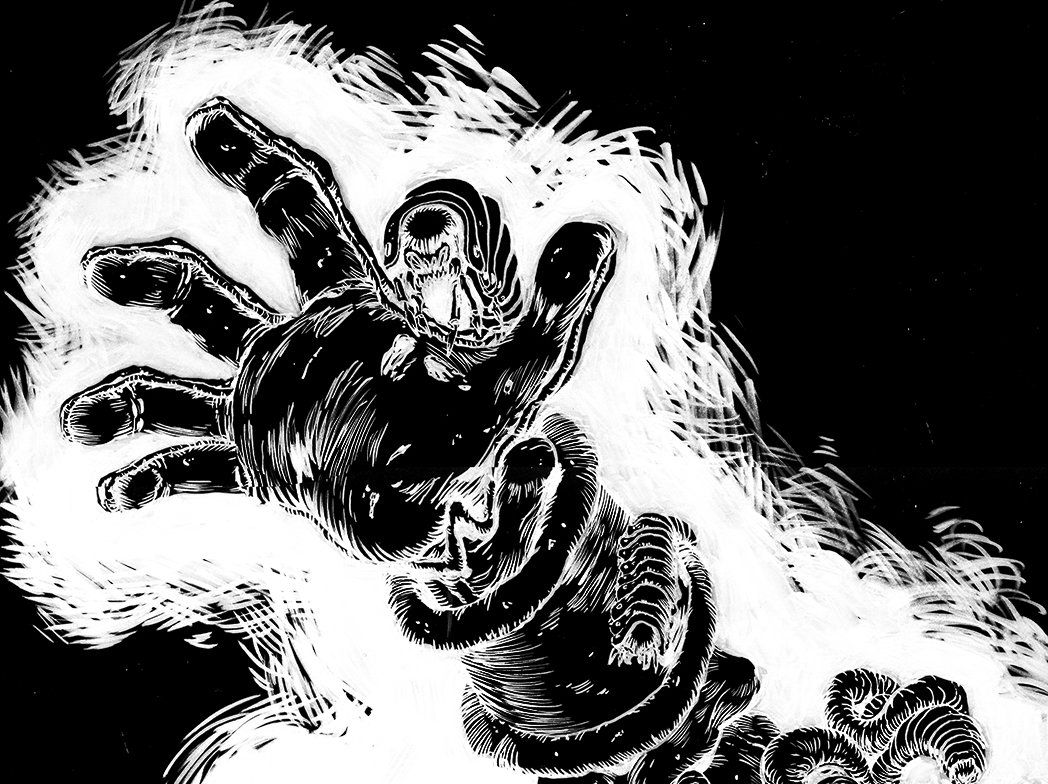
Keeping with what I already said about the various abilities, I won't go super analytical here, just taking a high level evaluation of the mechanics itself.
Initially there isn't anything too deviational from Chronicles: the format and flow is pretty similar, each round consisting of PCs and NPCs doing a combination of a Reflexive Action and any number of Instant Actions.
Or, uh, in Storypath Ultra, a Simple Action and any number of Reflexive Actions. Okay, the term shuffling might be a bit confusing, but it's the same thing[5].
After you roll to attack, any hits above the ones needed to beat the opponent's defense can be invested in Tricks, as mentioned earlier. This could be for dealing more damage, but it could also be for more tactical or narrative effects. Destroying cover, disarming an opponent, pulling aggro.
Though I wish they were presented in a more easily referable way (Like in Genesys), either way I think the options are great. Chronicles is comically lethal, since all excess Successes gets pumped into damage, so not only a good bump down to more "heroic" health, but a decent rejigging of the Stunts in Storypath Classic.
Another element worth pointing out is the simplification of enemies. For creatures listed in the ashcan, you have a few templates to choose from—most importantly, these give your monsters their dice pools, one for the stuff they're best at, one for the stuff they're good at, and then everything else. They also get their own qualities, and abilities called Antitheses, which is the opposite of Theses.
For basic ass spiders and other, non-sentient creatures, it works well, and creating enemies will be way easier than compared to Chronicles. However, I can't help but hope for proper antagonist sheets. One of the enemies you'll face in the scenario is called the haemexii, and their write-up is honestly one of my favorites in the ashcan. How they translate to the mechanics does leave a lot to be desired. Perhaps it's knowing that these fearsome monsters are just three dice pools and an effect or two. Still, I'd love to see more attention given to them so that their narrative strengths are carried over to the table.
Defense is where we start taking a turn from convention. When PCs are chosen as the target of an attack, they roll their Stamina—just their stamina—and every hit is then spent on a Defensive Trick. Everyone's defense starts at 1, which is kinda weird. Dexterity or your armor doesn't factor into that number at all, in fact, none of the quickstart PCs have armor in their equipment; if they have the Armor Expert ability, well that just gives them an extra "Injury Level".
I guess it's alright when you consider that you can't pump extra hits into damage as effectively, but it gets even weirder. Getting hurt doesn't degrade your PC's performance. In fact, you actually get stronger, for some reason. One additional skill die past the first Injury Level, two at the second, and a special high risk high reward ability once you reach the third.
Unfortunately, this combat system is better evaluated with a lot of practice. A lot of the options I discussed never came up in the game I was in, and we stuck to the basics to keep it fast. That said, it deviates from a lot of expected norms, and it may take more than a session or two before the mechanics really click.
I can't say any of them aren't worth giving a shot. The one I'm most worried about is the damage system—I associate it more with They Came From...!, which, yeah, becoming stronger from getting hurt does make sense in cheesy action flicks. The World Below would benefit from a more death-spiral approach, especially considering how fucked the Momentum economy is, but I'm willing to give it a few more tries.
If I had to complain about one aspect of the combat, it's that there's no rules for miniature play. Your average classic fantasy dungeon is some winding cavern filled with traps and other garbage, where you need to keep track of the direction you're going in and what rooms you already visited, and there's usually like fifteen or twenty. A couple of them instantly kill you. If you're appealing to the fantasy crowd, I think it'll be an easier sell if there's something familiar in The World Below, like square grids.
There was confirmation that the range bands will include the measurements in...VTT squares, is that what we're calling it now?...but I wouldn't be surprised if actual feet or metres were included as well. Plus, I don't see why they can't add some additional balancing and more granular measurements for AoEs and other abilities. Not that there's much like it, but might as well throw that in there.
My Biggest Concern
Speaking personally, I love the possibilities the lore teases, the rules are a big improvement over Storypath Classic for the most part, and I could see myself having a good time whether playing or running it.
Speaking as a reviewer, I'm hesitant to recommend this. To be honest, I think Onyx Path is going to botch the release of The World Below.
I realize that marketing is difficult—marketing a TTRPG, a gargantuan task. Onyx Path has done comparatively well in an industry where a large majority is dominated by one brand (As well as in spite of a cavalcade of bullshit pulled by a certain company whose name rhymes with "dirty socks"). Still, there's some bizarre choices they've made that I can't help but feel I need to comment on.
Let's start with the ashcan itself. They've released this preview without any sort of public roadmap[6]). What am I supposed to tell my players after running them through the ashcan? "Yeah, uh, that was fun but now we gotta wait like four years before we can continue this adventure." We have a ton of campaign ideas that aren't going to wait that long!
That's not that big of an issue—it is, after all, a quickstart meant to garner interest in the full product. It does, however, call into question their overall strategy to its marketing, and it does get worse from here.
During the virtual Onyx Pathcon, where they announced that The World Below was part of new The Earthbane Cycle, they also made a formal annoucenment of a new release within The Earthbane Cycle called At The Gates.
We know very little about it at this point, other than it does not share the setting of The World Below, and it's also taking cues from Final Fantasy video games rather than the OSR-flavored classic fantasy. Also something about fourth edition Dungeons and Dragons??? Apart from that, it's a mystery. Even something as basic as how these two games are connected, if they're connected at all, is left a mystery for reasons I could only guess at.
Intrigue is a big driver of interest, sure, but seriously though. They're already writing up a new core rulebook in this game line, not a supplement, before we have so much as a hint of a release window for The World Below. That, and we don't even know what this new game line is supposed to be!
And that's not all, if you can believe it! If we pull back, Onyx Path now has four active Storypath game lines, five if you count whatever the fuck Curseborne is. Then add in Pugmire, Legendlore, Scarred Lands, the leftovers of WoD20th and CofD...
They might have enough writers and artists to create content for all of them, but that ends up in the same marketing funnel. They have to be aware that this is going to be a major problem for The World Below going forward. It's a wholly new property, and without the space and attention it needs, I don't foresee much success.
This isn't a theoretical fear, either. They Came From...! should've been a slam dunk; it's a B-movie TTRPG that's fast-paced, unpredictable, and really easy to pick up and have fun with.
For reasons I have yet to fully understand, Onyx Path didn't release a broad core rulebook that sold readers on the wacky world of bad cinema and the variety of adventures you could go on. Instead, they released Beneath The Sea in 2020 and Beyond The Grave in 2022, both full rulebooks that offer largely the same rules and largely the same experience. It's limiting the player/GM pool by dividing it so arbitrarily, and it's absolutely fatal for such a small game line.
Somehow things got worse! They Came From...! now has three core rulebooks in development at the time of writing this review. I get that supplements don't sell as well as core rulebooks, but this is ridiculous. Two of them, [CLASSIFIED] and The Cyclops' Cave, follow the same formula as the first pair, although at the very least these are two different movie genres instead of different flavors of monster mashes. The third and most recent one is an anthology of different genres, which was more of what I was expecting from the line. Not only that, it uses Storypath Ultra rather than the older, less refined Storypath Classic.
Onyx Path basically already killed [CLASSIFIED] and The Cyclops' Cave before they even started printing them. Who's going to buy a book with one setting and minimal options when there's another with eleven settings and eleven times the options (And also uses the newer ruleset, too)?
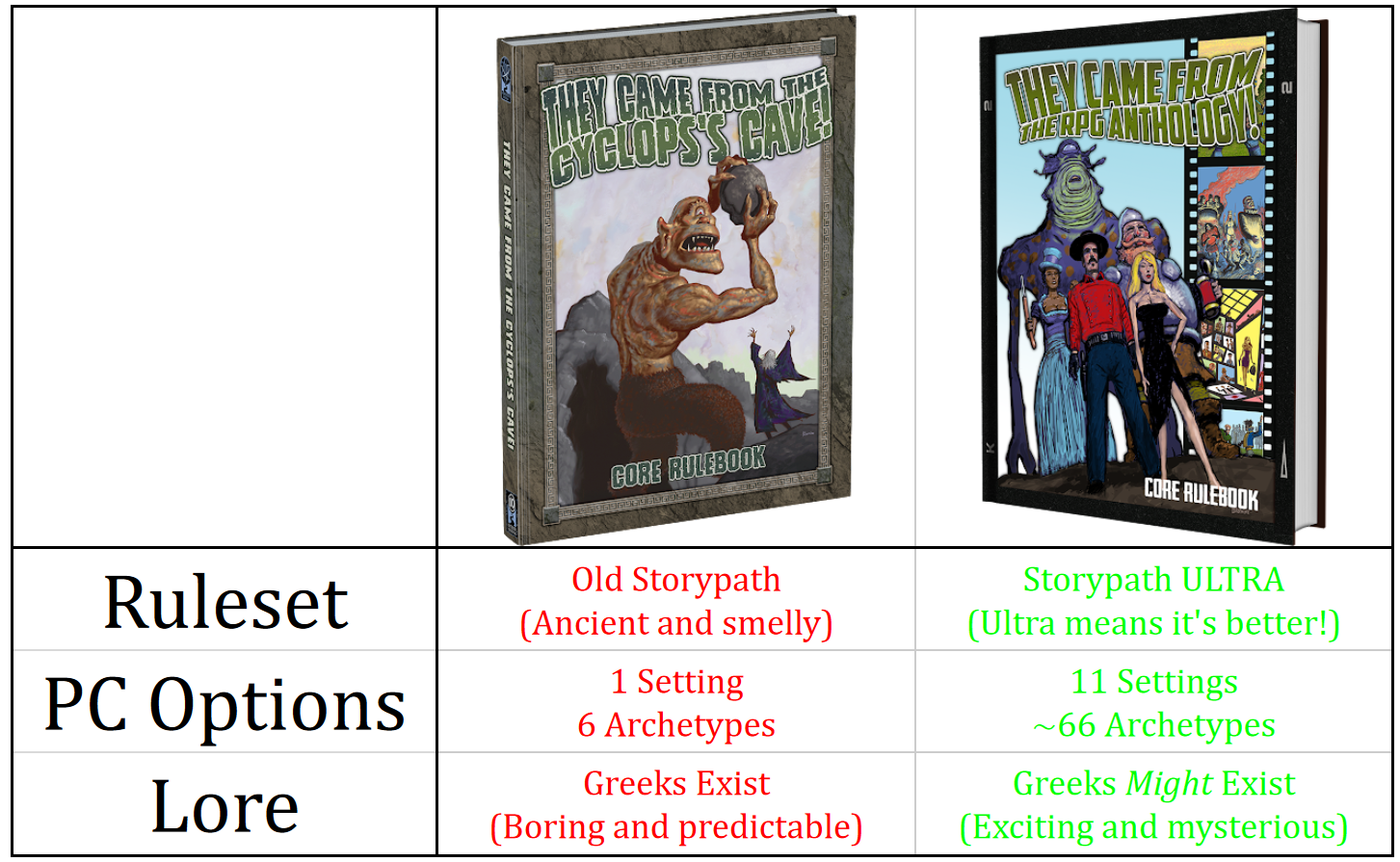
With They Came From...! as a recent example of marketing and developmental fumbles, why should I be excited for The World Below when, the moment it's out, it's going to get shunted and forgotten because New Product(tm) is coming out soon?
And, look, I'm not saying this to be an asshole. I like Onyx Path. I like what I've seen of the The World Below. Hell, for all I said about They Came From...!, I really like the game line and am excited for all three upcoming releases despite the bizarre decisions. I can't be confident in the longevity of The World Below. What good is recommending a game that feels like it's going to get unceremoniously dumped?
Seriously, I think they got something good, and I'm scared they're going to choke it out by cannibalizing their own audience. They shouldn't be coy and vague about fundamental details of this new game line, and they should make sure that it's not pushed to the side before At The Gates gets its inevitable Kickstarter push. But hey, that's just the opinion of the dumbass that buys these things, though.
Conclusion
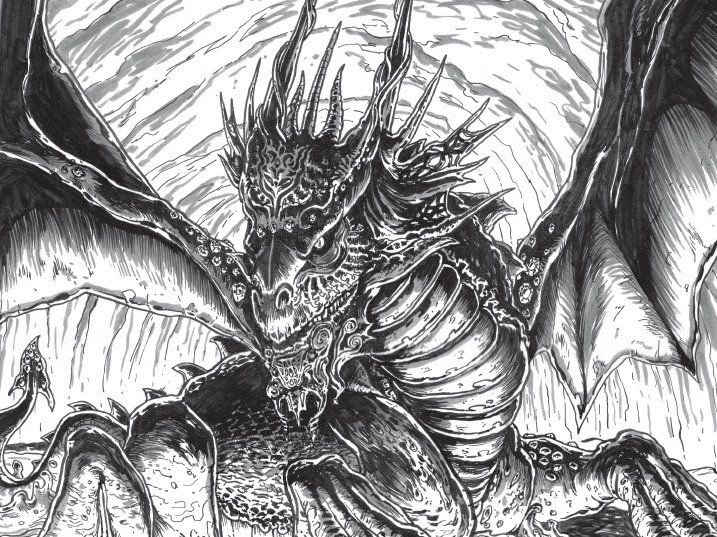
Despite being but a morsel of what's to come, there's a lot to like in The World Below. The setting and lore has caught my attention better than any of the previous Storypath games thus far, its vision of a society always teetering on the brink pretty well nailed. Its rules are also a marked improvement from Storyteller and Storypath, with some quibbles. It's a solid promise of things to come, and $5 isn't too bad of an admission fee.
It has an uphill battle, though. I don't think it entirely assuages the pains of a "narrative" system being used for the more tactical dungeon crawling world the lore wants to have. Momentum needs a rework, and the combat should be friendlier to those coming from traditional fantasy TTRPGs. More to the point, I think it'll have an even harder time in the long term. Onyx Path clearly has a business model that relies on a bevy of products being doled out on crowdfunding at a continuous rate, and this will be to the detriment of The World Below, especially as its successor waits ominously in the wings.
Still, there is time to change it, and I look forward to whatever changes (If there are any changes), they might make.
For lore specifically, the two that had the most impact from what I've heard was Matthew Dawkins and Michele Masala. The former is one of Onyx Path's developers, having written for and edited a variety of World of Darkness 20th Anniversary books among others, most recently the last few Werewolf 20th supplements. The latter is a freelancer, his first credit being in 2021's Mummy: The Curse Second Edition, and it seems he's since been given a much larger role in the writing for The World Below. Unfortunately, the guy privated his Twitter before I could screencap the posts where he noted what exactly he did, so you'll have to take my word for it. ↩︎
And also in the rules, with a downtime section called Kalm teased in the ashcan, but not elaborated on. ↩︎
Also because I have nowhere else to put it, but much of the art shown is either from the book or done for The World Below by Richard Thomas, Creative Director at Onyx Path. ↩︎
I assume a lot of familiarity with Chronicles of Darkness, and some elements are self-explanatory, but Aspirations are not immediately easy to grok for the uninitiated. It's okay, they're not that complicated. Aspirations are goals that the player sets for their character, completing them constitutes as progress towards XP. Also a bunch of other stuff, but that's not important for the purposes of this article. ↩︎
You might've noticed that there's a lot of terms being changed or shuffled around from the older editions. For a newcomer to this corner of TTRPGs, it doesn't matter as much, but for someone like me who's been reading and playing for a while, it gets annoying. Not that some of the changes aren't welcome—Successes to Hits makes sense when going to a system with a set difficulty—but I wish they'll be more consistent in the future. ↩︎
Though they have very recently announced the date for the Kickstarter, which sometime in October. ↩︎

